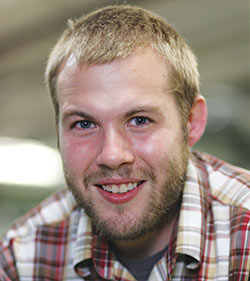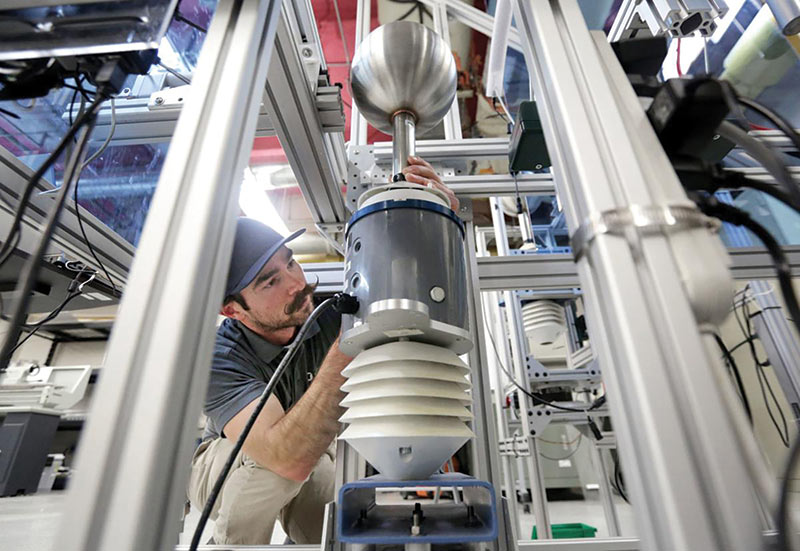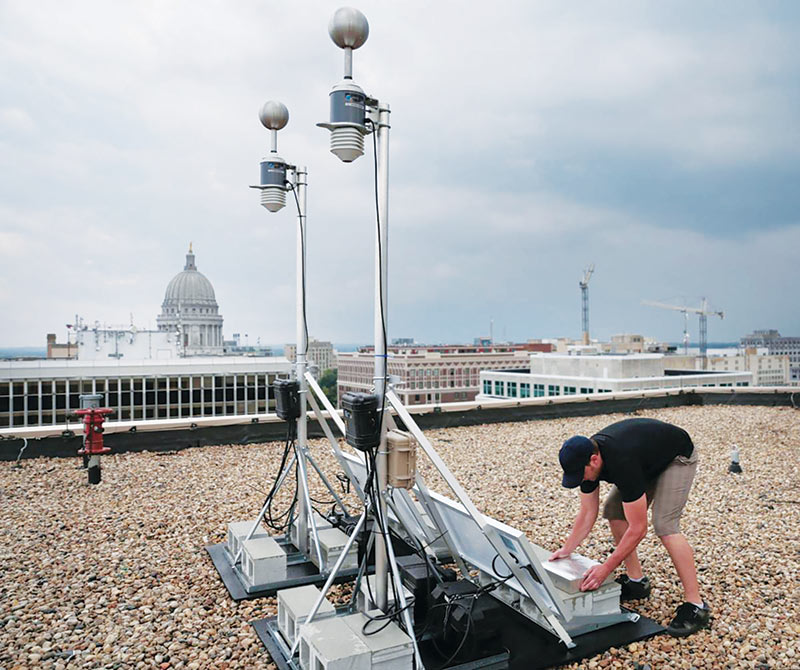The CEO: Alex Kubicek
Spring
2019
Spotlight on Hidden Physicists
The CEO: Alex Kubicek
Co-founder and CEO of Understory, a weather measurement and monitoring service.
 In August 2005, I watched on TV as Hurricane Katrina devastated southern Louisiana. Six months later I was on a bus to New Orleans with about 50 of my classmates from the University of Wisconsin to help in the relief effort. For the next week, fellow students and I tore out moldy plaster in an attempt to save the underlying structure of homes from being bulldozed.
In August 2005, I watched on TV as Hurricane Katrina devastated southern Louisiana. Six months later I was on a bus to New Orleans with about 50 of my classmates from the University of Wisconsin to help in the relief effort. For the next week, fellow students and I tore out moldy plaster in an attempt to save the underlying structure of homes from being bulldozed.
I was shocked and saddened by the devastation around me, but I was also hit hard by the implications of us understanding weather so poorly that we could barely provide meaningful assistance to those in harm’s way. We were in an age of incredible technological advancement, but we still couldn’t understand rain and storms.
After that, I threw myself into the study of cloud microphysics and atmospheric science, with the goal of improving short-term storm forecasting. It was during those studies that I realized there was a massive observation gap in the storm data collected to date. Our radars and satellites had been looking only up at the sky, not measuring what was happening on the ground. This insight inspired me to try to capture on-the-ground weather data. It was this pursuit that led to me cofounding Understory to advance how we, as a society, collect weather data and to attempt to tackle the effects of weather on the world’s economy and, most importantly, on human life.
We design, manufacture, deploy, and operate networks of ground-based weather and air-quality sensors that deliver real-time measurements on three continents. These networks have already reduced fraud in the insurance industry and increased efficiency in agricultural supply chains across the globe. And this is just the beginning.
While we’ve had the good fortune to be successful so far, our progression as a company hasn’t been without setbacks—such as our first deployment.
Given that cell towers were already quite prevalent throughout metropolitan regions, we thought it would be fiscally and environmentally smart to use cell towers as installation sites for our weather sensors. So, for our first deployment we scoped out a great location, contracted the required third-party professional installer, and set up our first station. Then, when we flipped on the power switch, nothing happened! The reason sank in immediately: The device was dead on arrival, and we had no way to retrieve it to troubleshoot the issue.
Although this was incredibly problematic for our first deployment, it was a failure that would significantly shape how we approached every deployment thereafter for the better. Learning this bigger lesson—that failures can be just as beneficial as successes—has continued to shape how we approach our products and sales and has really allowed us to thrive as a startup organization.
We’ll continue to learn from our failures and build on our successes to help industry partners and cities better understand how they can use our granular weather data in their decision-making processes to improve the lives of people in their communities.


